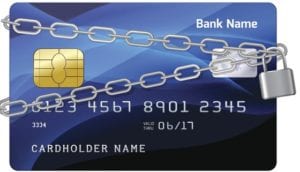It’s about being in the right place at the right time. It’s not top secret, but it’s close. Just like that, a bank professional becomes an espiocrat’s ally. When you’re in banking long enough, you could easily find yourself in this position: filing a Bank Secrecy Act report.
The country thanks you. According to the Internal Revenue Service, the Bank Secrecy Act helps combat terrorism. It also fights money laundering, organized crime, and more. Strangely, by following the Bank Secrecy Act reporting requirements, bankers could fulfill the most prosocial aspect of the job. After all, the reports could even help end human trafficking.
All of these positive outcomes draw from a banker’s rich professional experience and judgment. But don’t worry. Complying with guidelines – which is mandatory – can help strengthen even the newer banker’s skillset. You need only learn the rules. For this, you might get up to speed quickly by consulting others. But in reporting, you’ll be held to strict standards for secrecy. Confidentiality is key. Let’s find out why.
Let’s take a deeper look at two pieces of the Bank Secrecy Act: Suspicious Activity Reporting and Currency Transaction Reporting. Each report will be triggered by following your bank’s own rules to satisfy a BSA compliance program. Those rules are in place to identify questionable transactions, monitor them, report on them when deemed necessary, and more. If you’re curious about how to set those rules up, we invite you to investigate our exhaustive, self-paced professional certification course on the BSA and BSA AML Professional Certification.
BSA Suspicious Activity Reporting
The Financial Crimes Enforcement Network (FinCEN), a bureau of the United States Treasury, calls the BSA “our nation’s first and most comprehensive anti-money laundering statute.” Thus, the BSA is often used in the same breath as Anti-Money Laundering (AML) laws. Money laundering is an important clue in crimes of many types worldwide, which explains the crucial role banks play in alerting authorities when suspicious activity is detected.
When should a banker file a SAR or suspicious activity report? In a few cases, they will be required. Your bank should file a SAR if it suspects a criminal violation on the federal level or even a pattern of these types of violations on an insider level. This means that the bank or financial institution believes its “directors, officers, employees, agents, or other institution-affiliated parties” helped commit a crime, according to Federal regulations.
FDIC-insured banks should also file a SAR for suspicious activity in which transactions total $5,000 or more. The transactions here are not limited to single transactions but might be more than one, totaling $5,000 over the course of a day. In that case, when a suspect can be identified, the SAR must include relevant identifying information. If money laundering is suspected, the transaction should also be reported, according to the rules.
Similarly, transactions totaling $25,000 or more in one day must be reported whether or not a suspect can be identified.
Banks have a specific time frame in which to make reports. After the report is made, a few other rules apply. Copies can be submitted to state and local agencies, records should be retained for five years, the board of directors should be notified, and strict confidentiality should be observed.
BSA Currency Transaction Reporting
On the other hand, suspicious activity plays no role in a mandatory statement called the Currency Transaction Report. Instead, a minimum transaction total triggers this AML form. The amount? A relatively small sum of $10,000. Daily transactions totaling at least ten grand means the bank should identify the parties involved, make a report, and file a record to keep for themselves for five years.
What about all the legitimate business reasons for moving $10,000 around, including payroll? For those purposes, exemptions apply. However, the Federal Financial Institutions Examination Council explains that the types of transactions subject to these reports include not only deposits and withdrawals, including those made on ATMs, but loan payments, withdrawals to fund IRAs, some transactions with armored car services, and more. CTRs should be filed within 15 days of the aggregated transactions totaling $10,000 or more.
Learn more about BSA / AML
Bank compliance is mandatory when it comes to BSA/AML requirements. Stiff fines and penalties have been levied against banks of all sizes for failing to meet their obligations in this aspect, so setting up a robust process for checking your own work as you make a good faith effort to help law enforcement can protect you. Cultivated awareness and studied application of knowledge will help satisfy requirements for your own safety and the safety of the greater community you serve.
If you’re curious about what steps to take and why, Noggin Guru has you covered with our BSA AML Professional Certification. Check out this self-paced series to decide if our comprehensive training would benefit you or your organization…








